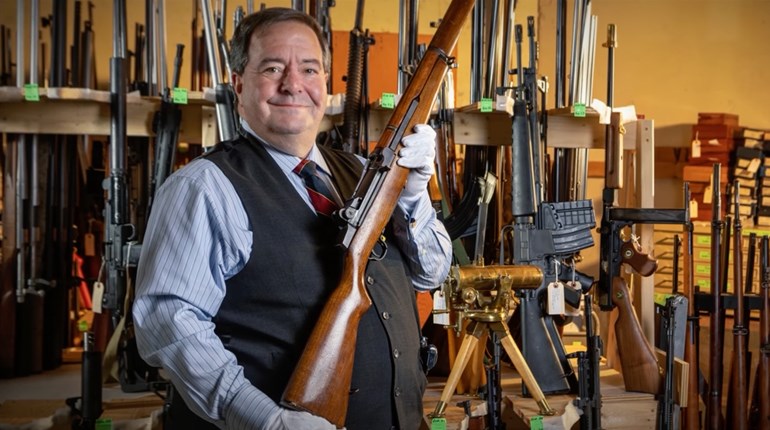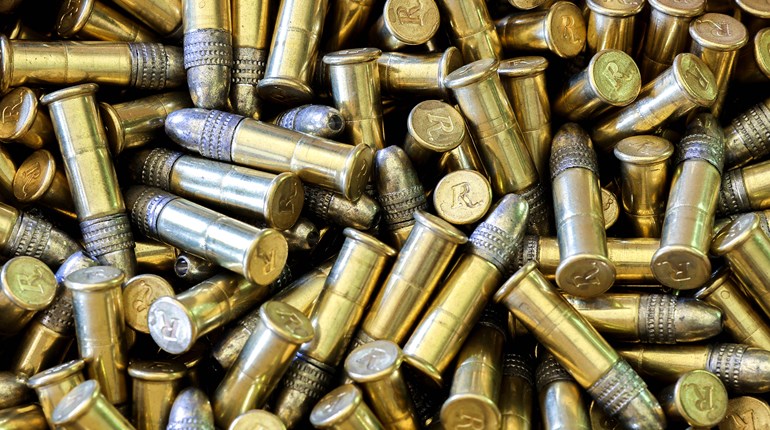** When you buy products through the links on our site, we may earn a commission that supports NRA's mission to protect, preserve and defend the Second Amendment. **

It may or may not come as a surprise to some readers, but the concept of concealed-carry isn't a new one. The Victorian Era featured many a gentleman and lady who saw fit to have a little extra protection on their person without advertising the fact. For women, the "muff derringer"—a small single- or double-shot pistol that would fit into a lady's handmuff—was de rigeur. However, as the Victorian author Edgar Allen Poe illustrated in The Purloined Letter, sometimes the best place to hide something was right in plain sight.
This is where Remington's Cane Gun came in. Remington's master mechanic F. Thomas patented the single-shot device in 1858, right in the middle of the Victorian era. These elegant firearms-turned-walking-sticks, complete with ivory heads and German silver ferrule rings, retailed for $15 in 1877. At 32 inches in length and weighing 20 to 24 ounces, they were a convenient and easy-to-carry addition to a gentleman's wardrobe. Interestingly, the Cane Gun was actually the first long gun ever produced by the Ilion, New York-based Remington Arms.
Available in .22 or .32 rimfire as well as .31 and .44 centerfire, the gun was fired by pulling back on the handle, which cocked the gun, then depressing an inconspicuous button trigger. The gun could not be fired with the handle closed, which acted as a safety feature for its gentlemen user. The Cane Gun was loaded by unscrewing the head/action from the barrel, then inserting a cartridge. Lacking an ejector or extractor, spent cartridges were unloaded by once again unscrewing the action and poking the empty case with a rod. Only about 2,300 of these firearms were ever produced, making them highly collectible and valuable curiosities.
The Remington Cane Gun is just one among thousands of fascinating, historic firearms on display at the NRA National Firearms Museum. Come and visit anytime: The Museum is open to the public and free for visitors. For more information, click here.
This is where Remington's Cane Gun came in. Remington's master mechanic F. Thomas patented the single-shot device in 1858, right in the middle of the Victorian era. These elegant firearms-turned-walking-sticks, complete with ivory heads and German silver ferrule rings, retailed for $15 in 1877. At 32 inches in length and weighing 20 to 24 ounces, they were a convenient and easy-to-carry addition to a gentleman's wardrobe. Interestingly, the Cane Gun was actually the first long gun ever produced by the Ilion, New York-based Remington Arms.
Available in .22 or .32 rimfire as well as .31 and .44 centerfire, the gun was fired by pulling back on the handle, which cocked the gun, then depressing an inconspicuous button trigger. The gun could not be fired with the handle closed, which acted as a safety feature for its gentlemen user. The Cane Gun was loaded by unscrewing the head/action from the barrel, then inserting a cartridge. Lacking an ejector or extractor, spent cartridges were unloaded by once again unscrewing the action and poking the empty case with a rod. Only about 2,300 of these firearms were ever produced, making them highly collectible and valuable curiosities.
The Remington Cane Gun is just one among thousands of fascinating, historic firearms on display at the NRA National Firearms Museum. Come and visit anytime: The Museum is open to the public and free for visitors. For more information, click here.







































